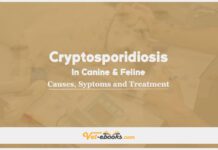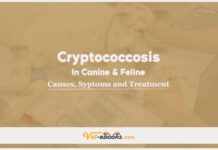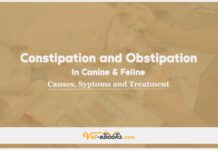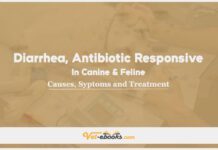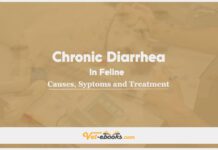Dysphagia In Canine and Feline: Causes, Symptoms and Treatment
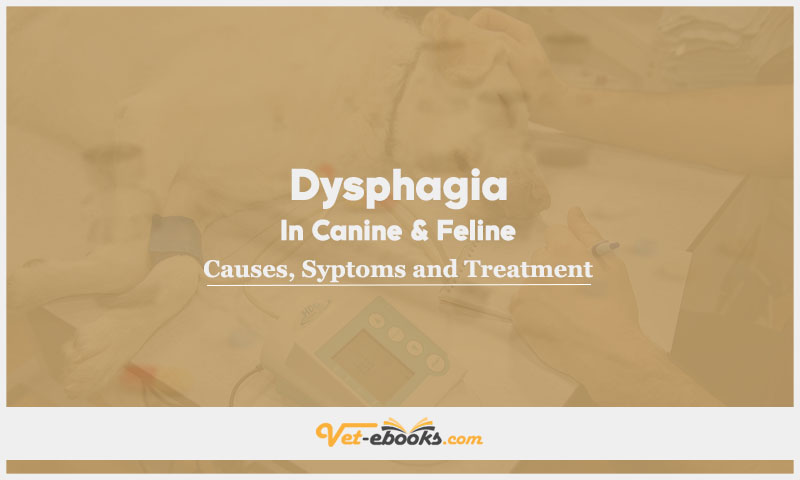
Contents
hide
Overview
- Dysphagia is an impaired swallowing ability that occurs more frequently in canines compared to felines.
- Dysphagia is classified into oropharyngeal, esophageal, and gastroesophageal etiologies.
- Dysphagia of oropharyngeal origin is further classified as oral, pharyngeal, or cricopharyngeal.
- Any illness that impairs the ability to grasp or chew food can cause dysphagia.
- Odynophagia is the experience of discomfort during the act of swallowing. It is observed in conjunction with pharyngitis, foreign bodies in the pharynx or esophagus, or severe esophagitis.
Causes of Dysphagia In Canine and Feline
Causes
- Anatomical or mechanical lesions such as pharyngeal inflammation (abscess, inflammatory polyps, oral eosinophilic granuloma), neoplasia, foreign bodies in the pharynx and retropharynx, sialocele, disorders of the temporomandibular joint (luxation, fracture, craniomandibular osteopathy), mandibular fracture, abnormalities of the palate (cleft or congenitally short palate), cricopharyngeal muscle achalasia, lingual frenulum disorder, and pharyngeal trauma.
- Oral conditions that cause pain include broken or abscessed teeth, jaw injuries, stomatitis, glossitis, and inflammation in the throat and mouth. This pain makes it hard to chew, swallow, and hold food together.
- Several things can cause stomatitis, glossitis, and pharyngitis in cats, such as FeLV, FIV, pemphigus, SLE, uremia, and eating acidic chemicals or foreign objects.
- Having issues with cranial nerves, like idiopathic trigeminal neuropathy of cranial nerve V, lingual paralysis of cranial nerve XII, or masticatory muscle myositis, it may be hard to grasp and make a bolus.
- Pharyngeal weakness, paresis, or paralysis arise due to several factors, including infectious polymyositis (toxoplasmosis and neosporosis), immune-mediated polymyositis, muscular dystrophy, polyneuropathies, and myoneural junction diseases (myasthenia gravis, tick bite paralysis, and botulism).
- Additional CNS problems, particularly those affecting the brainstem.
- Rabies induces dysphagia through its impact on the brainstem and peripheral neurons.
Risk factors
Several neuromuscular problems are associated with specific breeds.
Pathogenesis of Dysphagia In Canine and Feline
- Oral preparatory phase is an optional stage that begins with the introduction of food or drink into the oral cavity.
- The characteristic features of this phase involve the processes of mastication and lubricating food.
- Abnormalities observed during the oral preparation phase are linked to dental disease, xerostomia, and weakness in the lips (cranial nerves V and VII), tongue (cranial nerve XII), and cheeks (cranial nerves V and VII).
- The oral phase of deglutition includes the muscle movements that help move the bolus from the tongue to the back of the throat.
- This phase is characterized by coordinated movements of the tongue, jaw, and hyoid muscles.
- The pharyngeal phase starts when the bolus reaches the tonsils.
- This phase is characterized by the elevation of the soft palate, which prevents the bolus from entering the nasopharynx.
- Upward and forward movement of the larynx and hyoid, retroflexion of the epiglottis, and closure of the vocal folds to seal off the entrance into the larynx.
- The pharynx muscles tighten up, and the cricopharyngeus muscle, which is a big part of the proximal esophageal sphincter (PES), loosens up to make it easier for the bolus to move into the esophagus.
- During the pharyngeal phase, respiration experiences a temporary cessation known as an apneic period.
- There are problems with the pharyngeal phase of swallowing that can be caused by pharyngeal weakness from neuropathies or myopathies, pharyngeal tumors or foreign bodies, or illnesses that affect the cricopharyngeus muscle.
- In the esophageal phase, the food bolus moves into the esophagus after the lower esophageal sphincter (PES) relaxes. This is an automatic process that starts.
Symptoms (History & Physical Examination) of Dysphagia In Canine and Feline
History
- Excessive salivation, difficulty swallowing, intense hunger, persistent and exaggerated swallowing attempts, abnormal head positioning during swallowing, nasal discharge, coughing, regurgitation, painful swallowing, and, in some cases, loss of appetite and weight.
- If the tongue is not operating in its typical manner, it results in difficulties with prehension and mastication.
- Determine the initiation and advancement. Foreign bodies can lead to the development of acute dysphagia, while pharyngeal dysphagia may have a persistent and subtle beginning.
Physical Examination
- Should encompass a thorough assessment of the oropharynx, sedation, or anesthetic if required, to effectively eliminate the possibility of morphologic abnormalities (dental disease, foreign substances, cleft palate, glossal abnormalities, and oropharyngeal malignancies).
- The evaluation of cranial nerves should be conducted, encompassing the assessment of tongue and jaw tone and laryngeal function.
- A thorough neurological and physical exam might show signs of a generalized neuromuscular disorder, such as muscle atrophy, stiffness, or spinal reflexes that are weak or not present at all.
- Evaluation of the gag reflex involves the insertion of a finger into the pharynx.
- Presence or absence of the gag reflex does not necessarily indicate the effectiveness of the pharyngeal swallow or the sufficiency of airway protection during swallowing.
- The meticulous observation of the dysphagic animal’s eating and drinking behaviors by the clinician, in a hospital setting or through video monitoring at home, is of utmost importance.
- This observation is a critical tool in identifying the specific location of the problem, whether it lies inside the oral cavity, pharynx, or esophagus.
Diagnosis of Dysphagia In Canine and Feline
1- From History and Physical Examination
2- Diagnostic Procedures
CBC/BIOCHEMISTRY/URINALYSIS
- Values fall within the range of expected or acceptable values.
- Inflammatory situations induce leukocytosis.
- Elevated levels of creatinine kinase indicate myopathy.
OTHER LABORATORY TESTS
- Serology of acetylcholine receptor antibodies in relation to myasthenia gravis.
- Serological analysis of Type 2M muscle antibodies is utilized for the diagnosis of masticatory muscle myositis.
- To diagnose hypothyroidism, measure the levels of free T4, TSH, and antithyroglobulin antibodies.
- FIV and the FeLV.
Imaging
- Radiographic examinations of the neck and thorax in animals exhibiting dysphagia after excluding oral dysphagia as a potential cause.
- The establishment of aspiration pneumonia can be advantageous.
- A barium esophagram, which involves giving liquid barium by mouth and taking quick thoracic X-rays, can help doctors figure out what is wrong with a number of esophageal conditions, such as masses and strictures.
- The absence of abnormalities in an esophagram does not always rule out the presence of esophageal dysmotility.
- It is important to use videofluoroscopy with barium to fully check the pharynx, cricopharynx, and esophagus for proper function and to make sure that the upper and lower esophageal sphincters are working together properly.
- CT and/or MRI for additional assessment of suspicious masses.
3- Differential Diagnosis
- Neoplasia, masticatory muscle myositis, mandibular fractures, and temporomandibular joint disorders.
- Ulceration, stomatitis, glossitis, or eosinophilic granuloma.
- Severe lymphadenopathy, sialoadenitis, or oral abscess.
- trigeminal neuritis.
- immune‐mediated polymyositis.
- myasthenia gravis, botulism, tetanus, or tick bite paralysis.
- muscular dystrophy, rabies, or hypothyroidism.
- Cricopharyngeal achalasia.
- megaesophagus, vascular ring anomalies, or esophagitis.
Treatment of Dysphagia In Canine and Feline
General:
- The successful management and resolution of symptoms in cases of dysphagia hinge on the prioritization of treating the underlying cause whenever feasible.
- Cricopharyngeal myotomy demonstrates potential benefits in cricopharyngeal achalasia treatment.
Medications:
The management of dysphagia focuses on addressing the root cause of the condition.
Some Notes:
- Caution should be exercised while employing barium sulfate for radiography and videofluoroscopy due to the susceptibility of aspiration.
- If there are complications like aspiration pneumonia, disease in the CNS, or generalized severe weakness, the animal needs to stay in the hospital, get supportive care, and take specific medicines.
Tip
Do You Want To Increase Your Veterinary Knowledge and Practical Skills?
You Can Now Browse and Download +3000 Books For Veterinary Professionals & Students Online.
Download Veterinary Books

